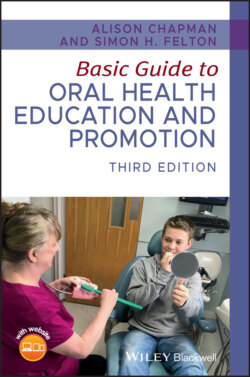Читать книгу Basic Guide to Oral Health Education and Promotion - Alison Chapman - Страница 44
Gingivae
ОглавлениеThe gingivae (gums) consist of mucous membranes and underlying fibrous tissue, covering the alveolar bone.
Gingivae are divided into four sections (Figure 1.11):
1 Attached gingiva – a firm, pale pink (but may have some brown pigmentation), stippled gum tightly attached to the underlying alveolar bone. It is keratinised (hard and firm‐like horn) to withstand the friction of chewing. Its orange‐peel appearance (stippling) comes from tightly packed bundles of collagen fibres that attach it to the bone. Loss of stippling is one of the signs of gingivitis (see Chapter 3).
2 Free gingiva – where the gum meets the tooth. It is less tightly attached and not stippled. It is also keratinised and contoured to form little points of gum between teeth – the interdental papillae. The indentation between attached and free gingiva is called the free gingival groove.Figure 1.11 Gingivae.Source: [2]. Reproduced with permission of Blackwell.
3 Gingival crest – the edge of the gum and interdental papillae bordering the tooth. Behind the crest is the gingival sulcus (or crevice), which is not more than 2 mm in depth [7]. This base of the crevice is lined with a layer of cells called the junctional epithelium, which attaches the gum to the tooth. When this epithelium breaks down, in disease, periodontal ligament fibres are exposed to bacterial enzymes and toxins. As these fibres break down, a periodontal pocket is formed.
4 Mucogingival junction – the meeting point of the keratinised attached gingiva and the non‐keratinised vestibular mucosa (soft, dark red tissue, which lines the inside of lips, cheeks, and the floor of the mouth).
